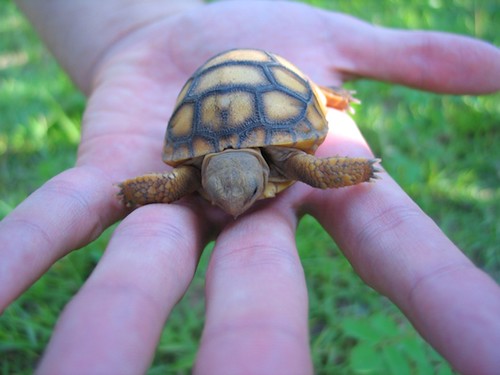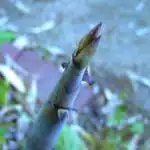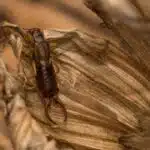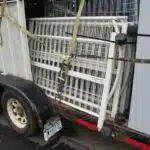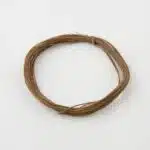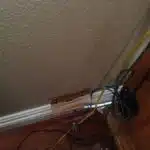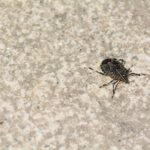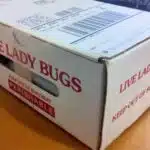Gophers are common pests that can cause significant damage to lawns and gardens. These burrowing rodents can quickly turn a beautifully manicured yard into a minefield of holes and mounds, leaving homeowners frustrated and in need of a solution. As pest control specialists, it is our duty to provide effective and efficient methods for getting rid of gophers from your yard.
Eliminating gophers requires careful planning and execution. It is important to understand the behavior of these pests, their preferred habitats, and the most effective methods for eradication. In this article, we will provide you with tips on how to identify if you have a gopher problem, how to prevent future infestations, and offer various methods for removing them from your property. By following these guidelines, you can successfully rid your yard of gophers, restoring your lawn or garden back to its former beauty.
Understanding Gopher Behavior
Gophers are burrowing rodents that can cause significant damage to your lawn. Understanding their behavior can help you effectively eradicate them from your yard. Gopher burrowing patterns can be identified by the crescent-shaped mounds of soil they leave behind. These mounds usually have a plugged hole in the center, which is the entrance to the gopher’s tunnel system.
Gophers tend to prefer certain types of vegetation, such as grasses and forbs, but will also feed on roots, bulbs, and other underground plant parts. Additionally, they may occasionally consume insects or small animals. By understanding what gophers like to eat, you can choose landscaping that is less attractive to these pests.
It’s important to note that gophers are territorial animals and may defend their burrows aggressively against perceived threats. Therefore, it’s best to approach any eradication efforts with caution and seek professional help if needed. In the next section, we will discuss how to identify gopher signatures in your yard so that you can take appropriate action against them.
Identifying Gopher Signatures In Your Yard
Gophers are small, burrowing rodents that can cause significant damage to your yard. Identifying their presence is crucial in order to effectively get rid of them. One common sign of gopher activity is the presence of mounds or raised ridges of soil on the surface of your yard. These mounds are created as the gophers dig tunnels and push soil up to the surface. Another sign is the appearance of holes in your yard, typically about three inches in diameter, which lead down into their underground tunnels.
Understanding gopher behavior patterns can also help you identify their presence. Gophers are active during the day and night, but tend to be more active during periods of low light. They also tend to be more active during cooler months rather than hot summer months. When it comes to feeding habits, gophers primarily eat roots and other underground plant parts, which can result in wilting or dying vegetation above ground.
Knowing these common gopher damage signs and behavior patterns can help you determine whether or not you have a gopher problem in your yard. If you do have a gopher problem, it’s important to take action quickly before they cause further damage. The next section will discuss different types of gopher traps that can be used for effective removal of these pesky rodents.
Transitioning into the subsequent section about ‘the different types of gopher traps’: By understanding how to identify gopher signatures in your yard, you can now take action towards removing them from your property by using effective trapping methods.
The Different Types Of Gopher Traps
Gopher trapping techniques have been used for centuries to control gopher populations. There are two main types of gopher traps: box traps and wire traps. Box traps are designed to catch the gopher inside a wooden box, while wire traps are designed to ensnare the gopher in a wire cage.
When selecting the best gopher trap, it is important to consider several factors. First, consider the size of the trap. A trap that is too small will not be effective at catching larger gophers. Second, consider the type of bait that is used in the trap. Different types of bait will attract different types of gophers.
In addition to selecting the best gopher trap, it is also important to understand how to set up a gopher trap effectively. This involves identifying areas where gophers are likely to be active and placing the trap in a strategic location. By following these steps, you can effectively control your gopher problem and enjoy a beautiful yard free from pesky critters.
How To Set Up A Gopher Trap
Effective baiting is crucial when setting up a gopher trap. The right bait will attract the gopher into the trap and increase your chances of catching it. Some effective baits include carrots, sweet potatoes, apples, and peanut butter. Avoid using poison as bait since it could harm other animals in the area.
Choosing the right trap is also important for humane removal of gophers. There are various types of traps available, such as box traps, snap traps, and tunnel traps. Before purchasing one, consider the size of the gopher and its behavior. For example, if the gopher is known to be cautious, a tunnel trap might be more effective than a snap trap.
Placement tips are also crucial when setting up a gopher trap. Place the trap near fresh mounds or active tunnels to increase your chances of catching the gopher. Cover the trap with dirt or grass to make it look natural and avoid scaring away the gopher. Check the trap daily until you catch the gopher and release it in a safe location away from your yard.
- Frustration: It can be frustrating to have your yard destroyed by pesky gophers.
- Empowerment: However, by following these tips for effective baiting, humane removal, choosing the right trap and placement tips, you can take control of your yard back.
- Satisfaction: Catching and releasing a trapped gopher can bring a sense of satisfaction knowing that you were able to solve this problem without harming any animals.
Transition sentence: Now that you know how to set up a gopher trap effectively, let’s discuss how to use gopher poison safely and effectively.
Using Gopher Poison Effectively
After setting up a gopher trap, you can move on to other methods of getting rid of these pests. Alternative methods include using gopher poison or repellent. However, it is important to take safety precautions when using these methods.
Gopher poison should only be used as a last resort, as it can be harmful to other animals and even humans if not used properly. It is important to follow the instructions carefully and keep the poison away from children and pets. Additionally, make sure to dispose of any dead gophers properly to avoid attracting other animals.
Gopher repellent is a safer alternative to poison, but its effectiveness varies depending on the brand and type used. Some repellents use natural ingredients like castor oil or peppermint oil, while others use chemicals like capsaicin or thiram. Before using any repellent, read reviews and do research on its effectiveness for gopher control.
Transitioning into the subsequent section about the pros and cons of gopher repellent, it is important to consider all options when dealing with a gopher infestation. While traps may be effective for some situations, chemical solutions may be necessary in others. In the next section, we will explore the benefits and drawbacks of using gopher repellent as a method for controlling these pesky rodents.
The Pros And Cons Of Gopher Repellent
A gopher infestation can be frustrating for any homeowner. It’s as if these burrowing rodents have taken over your yard, leaving mounds of dirt everywhere you look. While some natural alternatives may help to deter them, one option that many people turn to is gopher repellent. Like a knight in shining armor, gopher repellent promises to save the day by keeping your yard free from these pesky pests.
However, before rushing out to buy a bottle of gopher repellent, it’s essential to consider the pros and cons. On the positive side, gopher repellent can be an effective way to keep these critters at bay. The chemicals used in most repellents create an unpleasant odor or taste that drives gophers away. Additionally, applying repellent is relatively easy and doesn’t require any special skills or tools.
On the downside, while gopher repellent may provide short-term relief from an infestation, its long-term effectiveness is questionable. Over time, gophers may become accustomed to the smell or taste of the chemical and return to your yard once again. Furthermore, many types of gopher repellent are harmful not only to the pests but also to other animals and insects in your yard.
When it comes down to it, using gopher repellent is just one tool in your arsenal for getting rid of these pesky rodents. Natural alternatives like planting certain plants or using sonic devices may provide more long-term solutions without harming other species in your yard. In the next section, we’ll explore how creating a gopher-proof barrier can be an effective way to keep these critters out for good.
Creating A Gopher-Proof Barrier
When selecting materials for a gopher-proof barrier, it is important to consider the local climate and soil conditions. High-quality galvanized steel or aluminum mesh is recommended for the barrier, as it will be more resistant to rust and corrosion. Installation of a gopher-proof barrier should be done carefully, with attention paid to the surrounding soil conditions and any potential points of entry for the gophers. Professional pest control specialists may be consulted during the installation process for advice on the best placement of the barrier.
Selecting Materials
When it comes to creating a gopher-proof barrier, choosing the right materials is crucial. There are several options available in the market, but not all of them are equally effective. Therefore, it is important to compare the effectiveness of different materials before making a decision.
One commonly used material for creating gopher-proof barriers is wire mesh. However, not all wire meshes are suitable for this purpose. It is important to choose a mesh that has small openings and is made of sturdy material that can withstand pressure from gophers. Another option is using hardware cloth, which has smaller openings than regular wire mesh and is more durable.
Another effective material for creating a gopher-proof barrier is gravel or rocks. Gophers do not like burrowing through hard surfaces, so placing a layer of gravel or rocks at the bottom of your garden bed can deter them from entering. However, it is important to choose the right size and type of rocks as some may be too small or too large to effectively deter gophers.
In conclusion, selecting the right materials for creating a gopher-proof barrier can make all the difference in keeping your yard free from these pesky rodents. By comparing the effectiveness of different materials such as wire mesh and gravel, you can make an informed decision that will help keep your garden safe and healthy.
Installing The Barrier
When it comes to preventing gophers from wreaking havoc in your garden, creating a barrier is the most effective solution. There are various types of barriers available in the market, but not all of them are cost-effective or efficient. Therefore, it is essential to choose the right kind of barrier that will not only keep gophers out but also fit within your budget.
One type of barrier that is commonly used is hardware cloth. It is an affordable option that can be easily installed by digging a trench around the perimeter of your garden bed and burying the cloth at least 2 feet deep. Hardware cloth has smaller openings than regular wire mesh and is made of durable materials that can withstand pressure from gophers. Another cost-effective solution would be using chicken wire, which can also be buried at least 2 feet deep to prevent gophers from burrowing under it.
Installing the barrier correctly is crucial for its effectiveness. The first step would be to clear any debris or vegetation around the perimeter of your garden bed. Next, dig a trench around the area where you want to install the barrier and make sure it is at least 2 feet deep and wide enough to accommodate the width of your chosen barrier material. Once you have laid down the chosen material, make sure to secure it by covering it with soil and tamping it down firmly. By following these steps, you can ensure that your gopher-proof barrier will effectively keep these pesky rodents out of your garden while also being cost-effective.
Planting Gopher-Resistant Plants
One of the most effective ways to deter gophers from invading your yard is by planting gopher-resistant plants. These plants are typically known for their unpalatable taste and smell, which can discourage gophers from munching on them. In addition, some plants have toxic properties that can be harmful to gophers if ingested.
Gopher resistant shrubs are an excellent choice for those looking to add some greenery to their yard while also keeping pesky rodents at bay. Some popular options include California lilac, rosemary, and sagebrush. These shrubs not only repel gophers but also attract beneficial insects like bees and butterflies, making them a great addition to any garden.
Another option for gopher-resistant plants is groundcovers. These low-growing plants provide thick coverage over the soil, preventing gophers from burrowing underground. Some examples of popular groundcovers include creeping thyme, woolly yarrow, and blue star creeper. By incorporating both shrubs and groundcovers into your landscaping plan, you can create a beautiful and resilient garden that is sure to deter any unwanted visitors.
| Shrubs | Groundcovers |
|---|---|
| California Lilac | Creeping Thyme |
| Rosemary | Woolly Yarrow |
| Sagebrush | Blue Star Creeper |
Incorporating gopher-resistant plants into your yard is a great way to prevent these pests from wreaking havoc in your garden. Not only do these plants offer protection against gophers, but they also add beauty and diversity to your landscaping design. In the next section, we will discuss how installing physical barriers can further enhance your efforts in deterring these pesky rodents from your property without harming them.
Installing Physical Barriers
- Installing physical barriers such as gopher wire is a successful method of deterring gophers from entering a yard.
- Gopher wire is composed of woven mesh, which is buried deep in the ground and is designed to prevent gophers from entering.
- Gopher traps are another physical barrier option, and they are used to catch and kill the gophers that have already made their way into the yard.
- Traps should be set in the early morning or late evening when the gophers are most active.
Gopher Wire
Gopher wire installation is one of the most effective ways to prevent gophers from invading your yard. The wire is made with a fine mesh that is buried underground, making it difficult for gophers to burrow through. It can be installed around the perimeter of your yard or in specific areas where gophers are known to frequent.
When it comes to choosing the best gopher wire options, there are a few things to consider. First, choose a wire that is made with high-quality materials and has a small mesh size. This will ensure that the wire is strong enough to withstand the pressure of gophers trying to burrow through it, while also preventing them from slipping through any gaps.
Overall, installing gopher wire is an effective way to keep these pesky creatures out of your yard. By taking preventative measures like this, you can avoid the headache and frustration of dealing with an infestation down the line. Whether you choose to install the wire yourself or hire a professional, investing in this type of physical barrier is well worth it in the long run.
Gopher Traps
To complement the use of gopher wire, another effective way to get rid of gophers is through the use of traps. Gopher traps are designed to catch and kill these rodents. There are different types of gopher traps available in the market, including box traps and snap traps.
Box traps are usually baited with items that gophers find attractive, such as nuts or fruits. When a gopher enters the trap, it triggers a mechanism that closes the door behind it. Snap traps, on the other hand, use a spring-loaded bar to quickly kill a gopher when triggered by its movement.
While both types of traps can be effective in getting rid of gophers, they require patience and skill to set up correctly. In some cases, alternative solutions like repellents or poison baits may be more suitable for certain situations. It’s important to consult with a pest control specialist to determine the best approach for your specific situation.
In conclusion, while installing physical barriers like gopher wire is an effective way to prevent these rodents from invading your yard, it’s not always foolproof. Gopher traps can provide an additional layer of protection against these pests but require careful consideration before implementation. By working with a professional and considering all available options like alternative solutions such as repellents or poison baits you can effectively eliminate any infestations and keep your yard safe from unwanted guests.
The Benefits Of Professional Gopher Control
Benefits of Professional Gopher Control
Professional gopher control comes with numerous benefits that are not offered by DIY methods. One of these benefits is effectiveness. Professionals use various techniques to ensure that the gophers are eliminated from your yard. They have access to potent chemicals that are not readily available in retail stores. In addition, they have the expertise to identify the type of gopher and the most effective way to eradicate it.
Another benefit of professional gopher control is that it saves time and effort. Gophers can be challenging to eliminate, especially if you do not have the right tools or knowledge. By hiring a professional, you can rest assured that the job will be done effectively and efficiently, allowing you to focus on other things in your life.
Lastly, professional gopher control can help prevent future infestations. Professionals know how to identify potential entry points and take measures to seal them off. They also provide ongoing maintenance services to ensure that your yard remains free from pests.
Transition:
While professional gopher control offers excellent results, some people prefer handling pest problems on their own. The next section will discuss some DIY methods for getting rid of gophers from your yard.
Diy Gopher Control
Metaphor: Gophers are like the weeds of your yard, they seem to appear out of nowhere and can quickly become an eyesore. However, just like with weeds, there are various DIY methods of removing them.
Gopher trapping is one effective method of controlling gopher infestations in your yard. This method involves setting traps near the gopher holes and waiting for the gophers to get caught. It is important to choose the right kind of trap and place it correctly for maximum effectiveness. Once caught, you can either release the gophers far away from your yard or dispose of them appropriately.
For those who prefer natural gopher control methods, there are several options available. One such option is using predator urine as a deterrent. The smell of predator urine can scare off gophers and prevent them from returning to your yard. Another natural method is planting certain plants that repel gophers such as daffodils and castor beans.
- Use underground barriers made of mesh wire or gravel to prevent gophers from burrowing into specific areas.
- Install ultrasonic devices that emit high-frequency sounds that irritate and deter gophers.
- Create a habitat in your yard for predators that naturally hunt gophers such as snakes or owls.
As a pest control specialist, I highly recommend taking proactive measures to control any potential gopher infestations before they spiral out of control. By following these tips for both trapping and natural methods, you’ll be able to effectively manage any current issues while also preventing future ones.
Transition: While it’s important to know how to remove gophers from your yard, it’s equally essential to know how to monitor for their presence so you can address any new infestations early on.
How To Monitor For Gophers
After implementing DIY gopher control measures, it is important to monitor for gopher behavior to ensure their complete eradication from your yard. Gophers are notorious for their burrowing and tunneling habits, which can cause extensive damage to your lawn and garden. By monitoring for gopher activity, you can prevent further destruction and protect your property.
One effective method of gopher behavior monitoring is through yard inspection techniques. This involves conducting regular inspections of your yard for signs of gopher activity such as fresh mounds of dirt, chewed plants, and visible tunnels. By identifying these signs early on, you can take quick action before the infestation worsens.
To aid in your yard inspection efforts, consider creating a table to record any gopher activity observed during each inspection. The table should include columns for the date of inspection, location in the yard where activity was found, type of activity (e.g., fresh mound or visible tunnel), and any actions taken (e.g., setting traps or applying repellent). By keeping this record, you can track the effectiveness of your control methods and identify any patterns in gopher behavior.
By regularly monitoring for gopher behavior and using effective control methods, you can successfully rid your yard of these destructive pests. In the next section, we will discuss preventative measures to take in order to avoid future gopher infestations.
Preventing Future Gopher Infestations
Are you tired of constantly battling gophers in your yard? If so, it’s essential to take preventative measures to ensure that they don’t return. One way to do this is through gopher resistant landscaping. This type of landscaping includes using plants that gophers dislike, such as daffodils and alliums, and avoiding plants they love, such as tulips and carrots.
Another effective method for preventing future gopher infestations is through the use of natural gopher deterrents. For instance, planting castor beans around the perimeter of your garden can be highly effective at deterring these pests. Additionally, using a mixture of garlic oil and water to spray around areas where gophers are present can also help keep them away.
If you’re looking for ways to control gophers in raised garden beds or prevent damage to trees, there are a few things you can try. First, consider installing wire mesh beneath your raised beds before filling them with soil. This will prevent gophers from tunneling up into the bed from below. Additionally, wrapping tree trunks with wire mesh can also help protect them from being damaged by these pests.
In order to maintain a pest-free yard long-term, it’s important to take steps to prevent future infestations. By implementing techniques like gopher resistant landscaping and natural deterrents, as well as taking precautions like installing wire mesh around gardens and trees, you can significantly reduce the chance of experiencing further damage caused by these troublesome creatures. In the next section, we’ll explore how to repair any existing damage caused by gophers in your yard.
How To Repair Gopher Damage
- Gopher damage is identified by the presence of crescent-shaped mounds of soil, tunnels, and empty burrows.
- Repairs can be made by filling the burrows and mounds with soil, mowing over the mounds, and removing the tunnels with a rake or shovel.
- Fencing can be used to contain the gophers and prevent them from entering the yard.
- Traps are effective for removing gophers from an area, but they require regular maintenance and inspection.
- Chemical repellents can be used to deter gophers from entering an area, but they have limited effectiveness.
- Properly maintained and monitored gopher populations can be managed without the use of lethal measures.
Identify Gopher Damage
As a pest control specialist, it is important to identify gopher damage in your yard to prevent further destruction. Gophers are burrowing rodents that can cause a lot of damage to your lawn, garden, and landscaping. They create extensive tunnels that can be seen as raised mounds of soil on the surface. It is crucial to spot these gopher tunnels and take action before the damage becomes too severe.
One way to identify gopher damage is by looking for their characteristic mounds of soil. These mounds are created when the gopher digs its tunnels underground and pushes the soil up to the surface. The mounds can range in size from small piles to large hills, depending on how deep the tunnel is below ground. Another sign of gopher damage is wilting or dead plants in your garden or lawn. This occurs because gophers eat plant roots as well as other vegetation, causing them to die.
Lastly, you can identify gopher damage by looking for holes or openings in the ground near their mounds. These holes are used by the gophers as entrances and exits for their underground tunnels. If you notice any of these signs, it’s important to take action quickly to prevent further damage. Gopher damage prevention involves using traps or repellents specifically designed for use against these pests. By identifying and addressing the problem early on, you can save yourself time and money in repairing any extensive damage caused by these destructive rodents.
In conclusion, spotting gopher tunnels and identifying their tell-tale signs is crucial when it comes to preventing further destruction caused by these burrowing rodents. As a pest control specialist, it’s important not only to recognize these signs but also take immediate action with proper tools and techniques aimed at controlling this pest population before they get out of hand. Gopher damage prevention starts with awareness and vigilance – so keep an eye out for those mounds!
Repair Damage
Repairing gopher damage is an essential step in maintaining the health and appearance of your lawn, garden, and landscaping. Gophers can cause significant destruction by burrowing underground tunnels that lead to mounds of soil on the surface. These mounds not only ruin the aesthetic appeal of your property but can also cause soil erosion and damage to nearby plants. As a pest control specialist, it is crucial to know how to repair gopher damage effectively.
One way to repair gopher damage is by filling in any holes or openings created by their underground tunnels. This process involves removing any loose debris around the hole and compacting the soil tightly inside it. Another method for repairing gopher damage is by leveling out any raised mounds of soil caused by their burrowing activities. This helps prevent soil erosion and restores the smooth surface of your lawn.
Preventing future gopher damage is also critical in maintaining a healthy landscape. Using repellents or traps specifically designed for these pests can help keep them from returning to your property. Additionally, planting vegetation that gophers do not find appetizing, such as lavender or rosemary, can help deter them from coming back. By taking proactive measures against these pesky rodents, you can save yourself time and money in repairing extensive damage caused by their destructive behavior.
In conclusion, repairing gopher damage requires specific techniques aimed at restoring your lawn’s appearance while preventing further harm caused by soil erosion and plant destruction. As a pest control specialist, it is critical to know how to properly repair this type of damage while also implementing preventive measures for long-term success. By taking action against these destructive rodents early on, you can maintain a beautiful landscape without having to worry about extensive repairs in the future.
Fence And Traps
Maintaining fence and trap placement is another crucial aspect of repairing gopher damage. Fences act as a physical barrier that prevents gophers from accessing your property, while traps can help catch them before they cause any further destruction. Regular inspection and maintenance of fences are necessary to ensure that there are no gaps or openings that these rodents can exploit.
Traps, on the other hand, should be placed strategically in areas where gophers are known to frequent. Proper trap placement requires knowledge of their burrowing habits and behavior, as well as an understanding of the type of trap that works best for your situation. As a pest control specialist, it is essential to have the expertise to identify the most effective trapping methods for each unique situation.
In conclusion, maintaining fence and trap placement is a critical component in repairing gopher damage. By ensuring proper fence maintenance and strategic trap placement, you can effectively prevent future infestations and minimize further destruction caused by these pests. As a pest control specialist, it is vital to stay informed about the latest techniques and technologies available to combat gopher infestations effectively.
Wrapping Up: Tips For Successful Gopher Control
After repairing gopher damage, it’s essential to consider how to prevent future infestations. Implementing prevention strategies is crucial in keeping your yard free from gophers. One effective method is by removing their food sources, such as plants and vegetables that attract them. You can also install barriers around the plants or use wire mesh to keep them away.
Assessing the effectiveness of your prevention strategies is also necessary. Check for signs of new activity regularly, such as fresh mounds or tunnels. If you notice any, it may indicate that your prevention methods are not working correctly or that there are other factors at play. Consider seeking assistance from a professional pest control specialist if you are having difficulty controlling the gopher population in your yard.
In summary, preventing gopher infestation involves implementing strategies like removing their food sources and installing barriers around plants. Assessing the effectiveness of these methods is crucial in maintaining a gopher-free yard. Remember, seeking help from a professional pest control specialist can make all the difference in effectively controlling the gopher population in your area.
Conclusion
Gophers can be a frustrating pest to deal with, but understanding their behavior and identifying their signatures in your yard is the first step towards successful control. There are various types of gopher traps available, each with its own benefits and drawbacks, and setting them up properly is crucial for effective trapping. Gopher poison can also be used as an alternative, but it must be used carefully and according to label instructions.
Monitoring for gophers regularly is important to catch any infestations early on before they cause significant damage. Additionally, implementing preventative measures such as fencing and removing attractants can help reduce the likelihood of future infestations. If you do find yourself with gopher damage in your yard, repairing it promptly can prevent further issues down the line.
In conclusion, managing gophers requires a combination of knowledge about their behavior, proper use of traps or poison, regular monitoring efforts, and preventative measures. As pest control specialists know all too well, pests like gophers can cause frustration and disruption to our daily lives. But by taking the appropriate steps towards control and prevention, we can minimize their impact on our yards and gardens. Remember: stay vigilant and take action as needed to protect your property from these pesky rodents.
Image Credits
- “Baby Gopher Tortoise” by Steven Beger Photography (Beger.com Productions) (featured)

